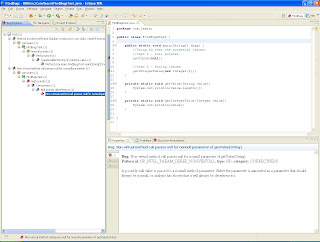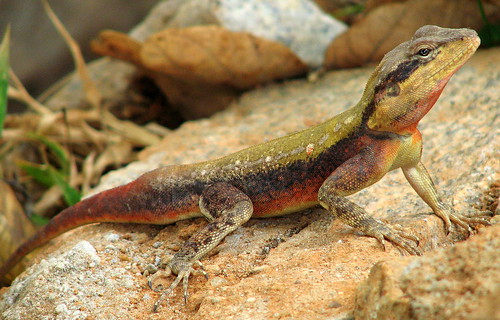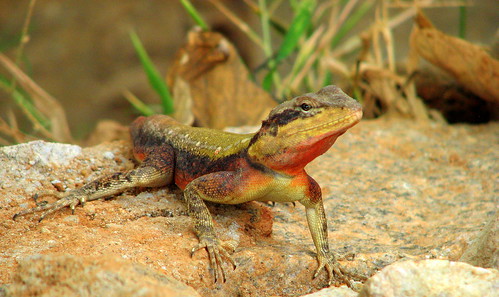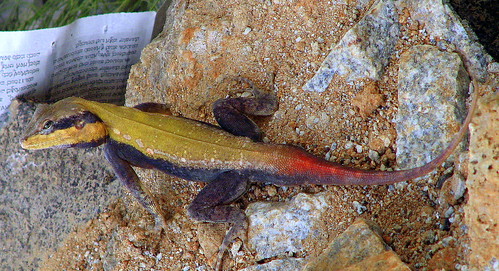Wednesday, March 17, 2010
Startup Saturday March 13 2010
Also got to attend a presentation on "5 things that a seed / angel investor is looking for in your venture" by Indus from themorpheus.
The five points are
1) Team
2) Market size
3) Product and POC
4) Secret sauce (the wow factor)
5) Growth path and exit (from a VC / angel investor perspective)
http://www.slideshare.net/indus/5-things-a-seed-stage-investor-is-looking-for-in-your-venture
The applications are open for this year till March 25th 2010.
m.m
My first photography journal - Rock Agama
http://www.wow-wonderworks.blogspot.com/2010/03/rock-agama.html
An agama is any one of the various small, long-tailed, insect-eating lizards of the genus Agama. Agamas originally lived in forest and bush across Africa, but have since adapted to live in villages and compounds where their habitat has been cleared. They live inside the thatch of huts and other small spaces, emerging only to feed. If caught out in the open, agamas are able to run quickly on their hind legs to reach shelter. Most agamas are polygamous. Males may hold six or more females in their territory for breeding. During courtship, the male bobs his head to impress the female. Occasionally, females initiate courtship by offering their hindquarters to the male and then running until he is able to catch up. The breeding season is typically March-May with eggs being laid in June-September during the season after the rains. Eggs are laid in clutches of up to twelve.
The most interesting fact is many people keep these as pets as well (am sure not in India).
Males of the African species reach over a foot (30 cm) long and sport bright orange, blue and brown colors. Sexual success determines the intensity of colors. For the prize of a harem of females, males fight one another sideways blows of their tails. The winners are always startlingly bright but the defeated males turn out a dull grey, similar to the females. Many of the actions of males fighting are also seen during male mating behavior. When a female first approaches a male will bob his head and show his bright throat, as he does when first challenged by a male. If the female is receptive the pair move closer together and mate. Females lay between 3 and 10 eggs. Changes in color also occur if the male is stressed or threatened. A color usually not visible might be flashed by some species, such as the African agama which turns to face an intruder and opens its mouth to expose the brilliant orange inside. More info
Basking occurs mainly in the morning between ten and noon (a good time for photography I shot it at 1:30), agama is a sit and wait predator. The agama that I spotted was about two compounds away from my house in South Bangalore, I spotted the bright and flashy male and also the almost black, white and brown female. I ran back home to get the camera and I shot a few pictures of the male but before I could get a few shots of the female, she disappeared. The informal names are Peninsular Rock Agama and South Indian Rock Agama, the real name is Psammophilus dorsalis. I have also heard that the Blanford's Rock Agama Psammophilus blanfordanus is found in India (Bihar, Orissa, Central Provinces, Eastern Ghats, Travancore south to Trivandrum) - Hope I can get a good glimpse of the female as well.
Also this is my first journal entry. Thanks to Kalyan Varma for helping me to identify this species.
Time for some pictures.
http://www.flickr.com/photos/minmaxmim/4437012417/
http://www.flickr.com/photos/minmaxmim/4436997545/
http://www.flickr.com/photos/minmaxmim/4437772508/
http://www.flickr.com/photos/minmaxmim/4436995615/
Tuesday, March 09, 2010
Compost your kitchen wastes at home and produce free manure
I am one of those vague self proclaimed naturalists, green activist asking people at home and outside to switch lights and fans off when they are not needed even if it’s for a mini macro nano second. I ensure CFL’s are used instead of bulbs and tube lights, even at the cost of reading in dim light (kidding there are real bright cfl’s). I ensure I give the dirty stare to drivers of polluting vehicles at the cost of them looking back at me with the same look that they would give to a stray dog. That’s the risk of belonging to the rare pedigree of these self proclaimed saintly beings. Before I forget I also relocate many earthworms that get their gps bearings wrong and enter the concrete jungle called human civilization, I will soon try to break the no of centuries that Sachin has hit in his international career.
I see the kitchen wastes going to the bin every day and my ‘sleeping inner do good’ component wakes up and says I will make sure I am going to reduce global warming. My rationale behind that statement was not that I will stop cows worldwide from belching or f**ting, but that these vegetable wastes would end up in a landfill, decompose and release CH4 (methane if CH4 isn’t methane please scream at the educational system: watch 3 idiots movie) and increase the temperature. I go searching for a container for making compost and end up buying a bucket with a lid (thanks goodness for the lid). I come and ask the head of the kitchen a.k.a my wife to keep a separate bag and fill it with the cooking, vegetable and edible waste regularly and in return I get this look which in plain English means “oh no not again, you and your crazy antics when will you ever stop doing all this and bothering others”. Then slowly my bucket starts getting filled up but also with that complaints start flowing from my neighbors that the smell is too good and needs to be relocated immediately (so that others can get lucky and experience the heavenly smell). Strangely the dogs in my neighborhood have been avoiding roaming anywhere close to the vicinity and even if they have the guts to get close they have this curious look not knowing what’s wrong (guys didn’t I surprise you for all the peeing that you do on the gate post/pillar). Time for the James Bond secret arsenal - the lid, close it with such ferocity that the buckets vibrates exactly two times - odour under control operation back on track. Now I wait and wait for more than 4-5 weeks see that the waste is very slowly disintegrating into unrecognizable forms which is good but is giving out too much water, time for the internet and google “how to make compost at home” and the search returns 3,210,000 pages enough to last a life time’s of good read.
There are two types of aeration that is needed, one open and one closed, you will need closed ones for home waste due to the smell that is generated. The excess water that is generated can be absorbed by shredding newspaper into small bits and throwing them into the bucket. You can also add some excess soil, mud of sand to aid in the entire process. And if you have access to saw dust it is very good for absorbing water.
Did all of this and finally attended a green stall and bought something called compost accelerator (http://www.dailydump.org/ ) which accelerates the entire process.
Now I wait patiently for the waste to turn into a sludgy compost and then start using it in my garden and get some nice tasty organic pesticide free veggies.
Till then it is Monish signing off and planning for my next green project. Any tips and advice is not welcomed but free manure …YES!
Some useful links
What? http://www.dailydump.org/composting
Why? http://www.dailydump.org/why
How? http://www.dailydump.org/how
m.m
Thursday, March 04, 2010
Static Code Analysis Tool – Find Bugs Tutorial
What is it?
FindBugs is an open source program created by William Pugh which looks for bugs in Java code. It uses static analysis to identify hundreds of different potential types of errors in Java programs. FindBugs operates on Java bytecode,rather than source code. The software is distributed as a stand-alone GUI application. There are also plug-ins available for Eclipse, Netbeans, and IntelliJ IDEA
Official Website?
http://findbugs.sourceforge.net/
How to Install the Eclipse Plugin?
http://findbugs.cs.umd.edu/eclipse/
Demo & FAQ?
http://findbugs.sourceforge.net/demo.html / http://findbugs.sourceforge.net/FAQ.html
How does it work and how to use it?
a) After you install the eclipse plugin, restart eclipse.
b) Go to Window –> Show view –> other and select the find bug options available.

c) Open – perspective – Findbugs [Window –> open perspective–> findbugs]

c) Create a potential test class (with some obvious issues) like the following,

d) Initiate the find bugs by doing the following.

e) Now the errors get listed based on Project – Type – Package – Class – Priority – Category – Error – Location


f) Now you try to correct them :)
Final Verdict – I am able to find several small but nevertheless ISSUES in existing code, so I would say it is a must use tool and yes it is free WHY NOT?
m.m



